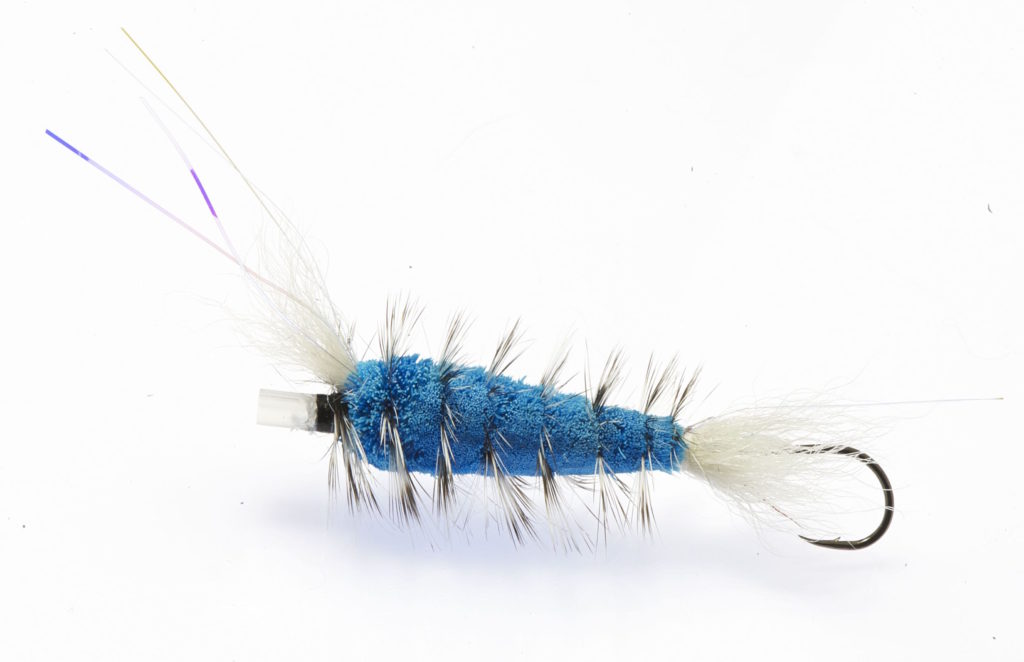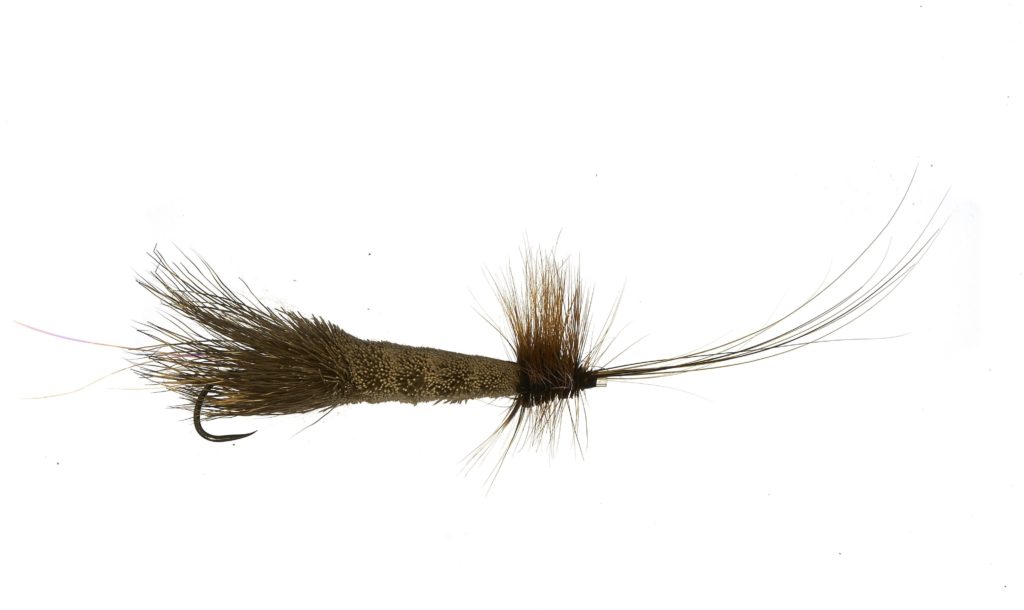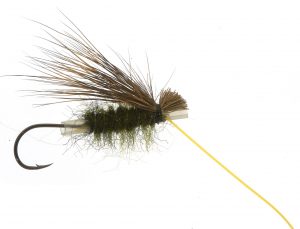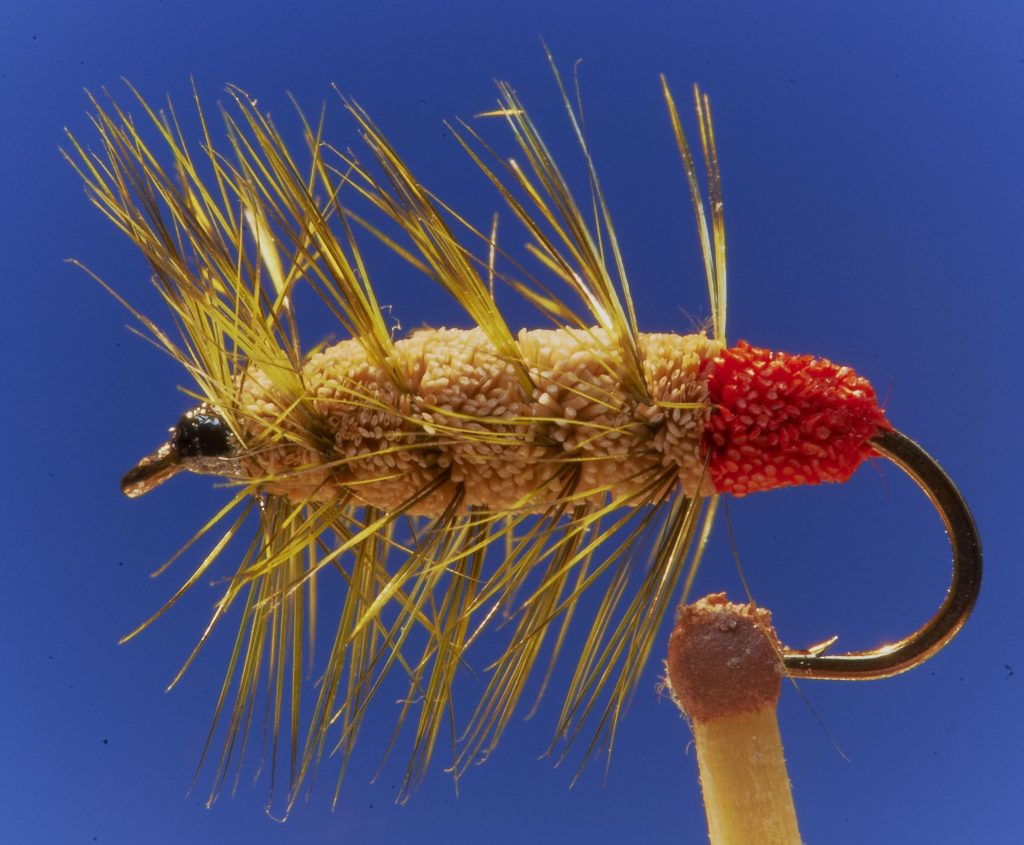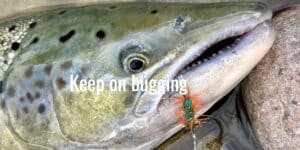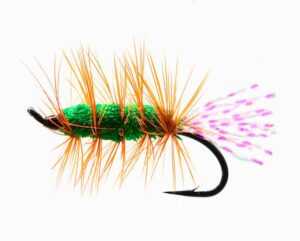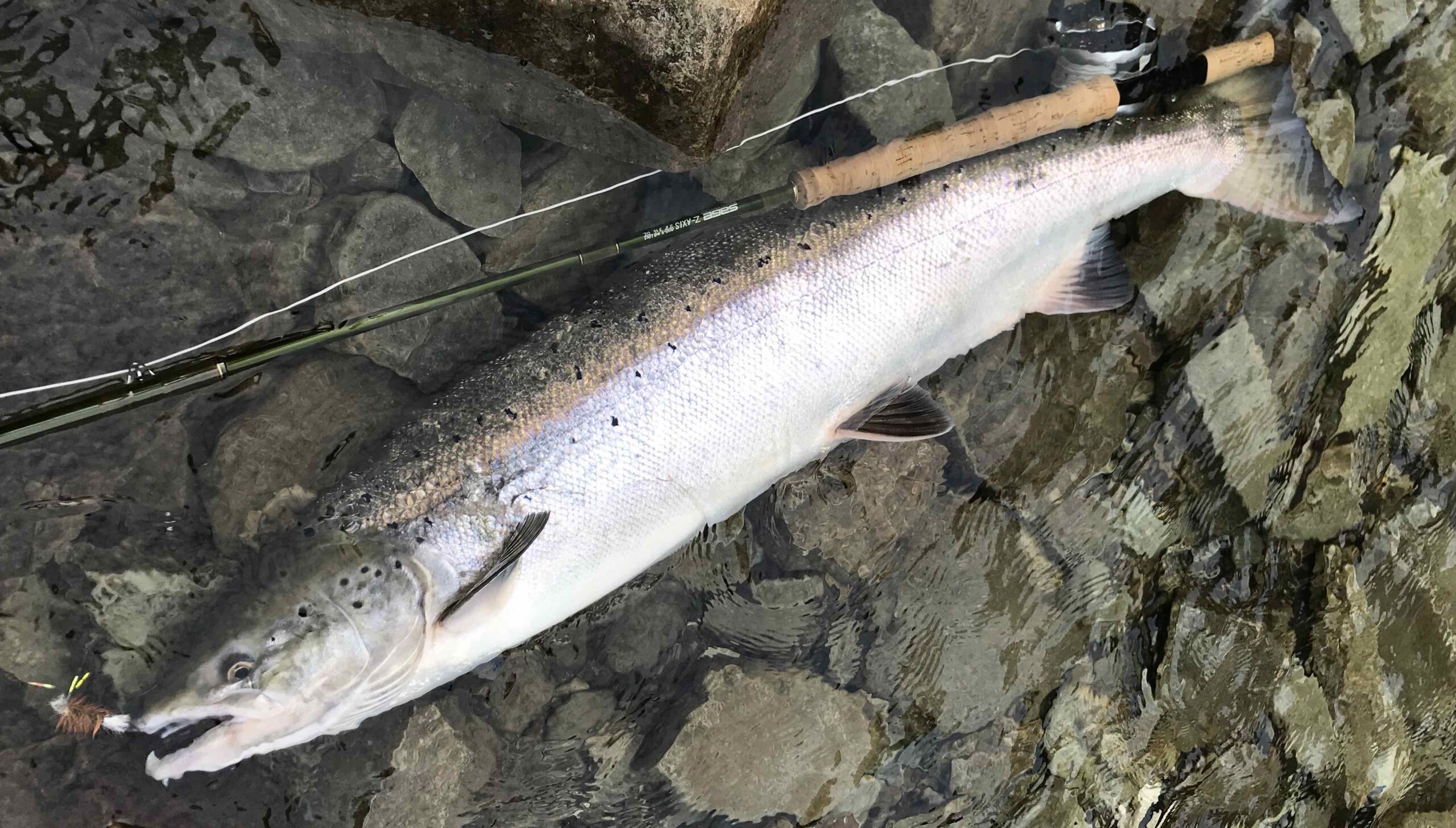
The ultimate quest: 100 cm (39.4 inches) of Atlantic salmon caught on a July day on a medium size Dark Green Tube Bomber – Leader 0.25 mm. Maxima (8 lb.) – Hook a small # 14 Owner St BC
Danish salmon angler par excellence; Mr Henrik Mortensen with a bright dry fly salmon from the Bonaventure River – caught on a medium size Monster Tube Caddis ™
100 pages of top water fishing
Right: The Monster Tube Caddis is a modern salmon dry fly tied on a tube – and designed to imitate the caddisfly insect that salmon and trout depend upon as food when they live as parr in the river system
Salmon dry fly through a century
 Salmon dry fly 1840’s
Salmon dry fly 1840’s
Mr. Wood was not the first Briton to recognize the potential of fishing for salmon on the surface. Descriptions of this technique can be traced back to early English fishing literature dating as far back as 1846.
One such example is found in the book “A Manual of Modern Farriery: A Popular and Practical Treatise on the Diseases of Horses and Other Domestic Animals… with a Sporting Section and UK Game Laws” by Thomas Brown, published by George Virtue around 1846.
Left: The accompanying plate displays a diverse selection of trout and salmon flies, while the text provides detailed instructions on fishing on the surface for salmon. These instructions could very well describe fishing with a salmon dry-fly, but they could also pertain to other techniques such as dibbling, dapping, or the Riffling Hitch method.
For further details and images, refer to A Manual of modern farriery
 Major J.R Fraser’s salmon dry fly patterns 1909
Major J.R Fraser’s salmon dry fly patterns 1909
The earliest documentation of salmon dry-fly fishing that we have encountered originates from England: Major J.R. Fraser’s salmon dry-fly series, listed in a 1909 Farlow and Co. catalogue, along with descriptions of his fishing techniques and recommended tackle. While there is limited information available about Major J.R. Fraser and his remarkable salmon dry-fly series, we do have an introduction provided by Mr. Fraser in the Farlow fishing tackle catalogue.
Left: It is widely acknowledged among angling historians that the British were likely the first to write about salmon on the dry fly. Although Canadian angler Mr. George M. La Branche is often credited as the first to describe salmon fishing with the dry fly, the technique’s origins are frequently attributed to UK anglers. The color plates featuring Fraser’s flies to the right are from a 1919 Farlow catalogue, but Farlow had the same series of flies and writings by Mr. Fraser in earlier catalogues dating back as far as 1909.
We received invaluable assistance with details on early salmon dry-fly fishing from the Farlow 1909 catalogue from a Nova Scotia angler. Mr Perry Munro
See the text and images from the 1919 Farlow catalogue
 La Branche visits the Dee –
La Branche visits the Dee –
In 1925, La Branche journeyed to the Dee in Scotland, invited by the renowned angler, Mr. A.H. Wood. Wood was intrigued to witness the application of the Canadian salmon dry fly technique on Dee salmon. Unfortunately, unfavorable weather conditions and a scarcity of fresh-running fish posed significant challenges for La Branche, who failed to land a salmon that week. Nonetheless, La Branche managed to entice approximately 20 fish to his salmon dry fly, with two of them hooked but ultimately lost. Undoubtedly, under better conditions, he would have found success in landing fish.
Right: Pictured are Ambrose & George, attired in what appears to be a 1920s sports-casual ensemble, ready for a day of sport. These anglers share the same passion for salmon dry fly fishing as you and I.
To learn more about these salmon adventures, visit: dry fly pioneers
One can only guess on how much different the world of salmon fishing would have looked had their been – fresh water and fish in the Aberdeenshire Dee that jinxed week in 1925..
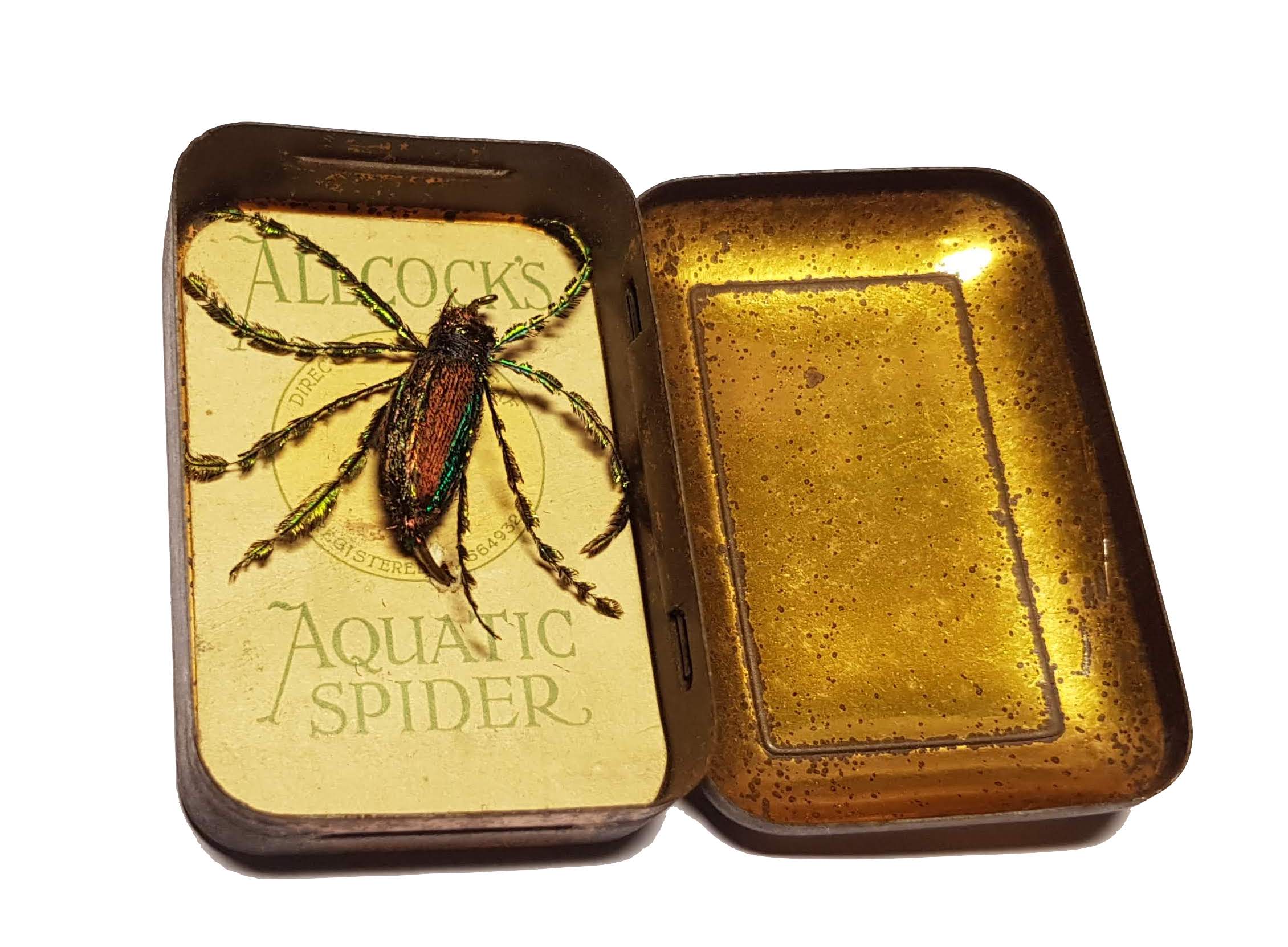
An early unorthodox salmon dry fly from Allcock
A rather unconventional salmon dry fly, the Allcock’s Aquatic Spider, originating from British Allcock, dates back to 1938. Special acknowledgement for providing details on this fly goes to Finnish fly fishing historian and author Pertti Kanerva. According to Pertti, Allcock’s Aquatic Spider has been available in Finnish fly-fishing shops since the 1920s, offered in three sizes: 5, 10, and 12. Initially, the flies were packaged in a tin box but later transitioned to plastic packaging. Allcock discontinued the sale of this fly in the early 1970s.
To learn more about the Allcock Aquatic Spider, visit: here
 The Wulff flies 1950
The Wulff flies 1950
Another couple of decades came to pass when salmon dry fly yet again made the headlines.
With the book, The Atlantic Salmon – published in the late ’50s, author and famous angler Mr Lee Wulff made the salmon dry fly sport popular in North America. In his book, Lee Wulff presented a new line of dry flies named the Wulff series that he and fellow angler Mr Dan Bailey had designed. The flies were big bushy cartoon-like imitations of mayflies and was originally intended for trout fishing – but soon proven to be just the right dry flies for Atlantic salmon. The Wulff series was designed almost 50 years ago – but still today these flies are closely linked with everything concerning salmon dry fly
Tribute to Lee Wulff
Lee Wulff has greatly influenced the fly fishing sport as a whole and salmon dry fly fishing in particular. Without his dedication and profound insight into the world of the Atlantic salmon things like salmon conservation, fly fishing equipment and fishing techniques would have looked much different from what they do today – We recommend reading Lee Wulff’s book: The Atlantic Salmon
Right: A selection of original Lee Wulff Surface Stonefly as described in the 2nd edition of The Atlantic Salmon.
A salmon fly Lee Wulff produced with a cast resin body. Lee Wulff used this cast resin technique on other types of flies for salmon and trout and he even did a do-it-yourself kit for anglers wanting to try the cast resin technique on their own fly patterns.
The Bomber’s 1960
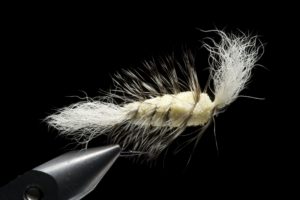
The story goes: that Mr Smith got his inspiration to the Bomber fly after seeing a salmon rise to the cigar-butt he had just thrown in the river…
The Bomber: Probably the most versatile salmon dry fly ever made. Here a bright summer fish caught on a white Tube Bomber ™
Fishmadman Tube dry flies 1990
White Tube Bomber ™ a favourite patter among many Scandinavian salmon anglers fishing clear rivers in Norway – made in 3 sizes it will cover the season and all kinds of rivers. See our flies in the E-Shop
In 1979, Lee Wulff discussed his experiments with dry flies and skaters tied on plastic tubes in his book “Lee Wulff on Flies.” Intrigued by the potential of crafting flies in sections, Wulff aimed to design flies of the appropriate size directly at the riverbank, eliminating the need to change hook sizes.
We at Fishmadman took the concept of tube dry flies further in 1995 by tying classical Bomber patterns and other salmon dry flies on extremely thin tubes. This innovative approach resulted in lightweight dry flies with significantly different hook-holding capabilities than traditional salmon dry flies. We achieved superior hooking abilities by fitting our flies with small, wide-gape hooks without adding considerable weight. Our inaugural tube salmon dry fly, the Tube Bomber™, was designed explicitly for fast-flowing waters of large rivers—a substantial, over 2-inch dry fly that would have been excessively heavy if tied on single hooks.
Bombers made for wake-fishing
Left: Most of our Tube Bombers ™ are designed to be fished at dead drift – but we also do a range of Bomber’s tied to be fished as wake flies. Here the Aqua Bomber – especially styled for steelhead rivers like the Babine and Kispiox
The Monster Tube Caddis salmon fly
In the 90’s we also made an imitation of a caddisfly found in great numbers at the rivers we fish in Northern Norway. The Monster Tube Caddis ™ is also tied on our thin hard tube – A salmon dry fly with a fantastic ability to pull big salmon to the top – A must have… in the fly box of any modern salmon angler.
Read about the Monster Tube Caddis in Norwegian
Salmon micro bug flies
Above the Crimson Butt Bug – A favoured pattern among Atlantic Salmon anglers on Newfoundland.
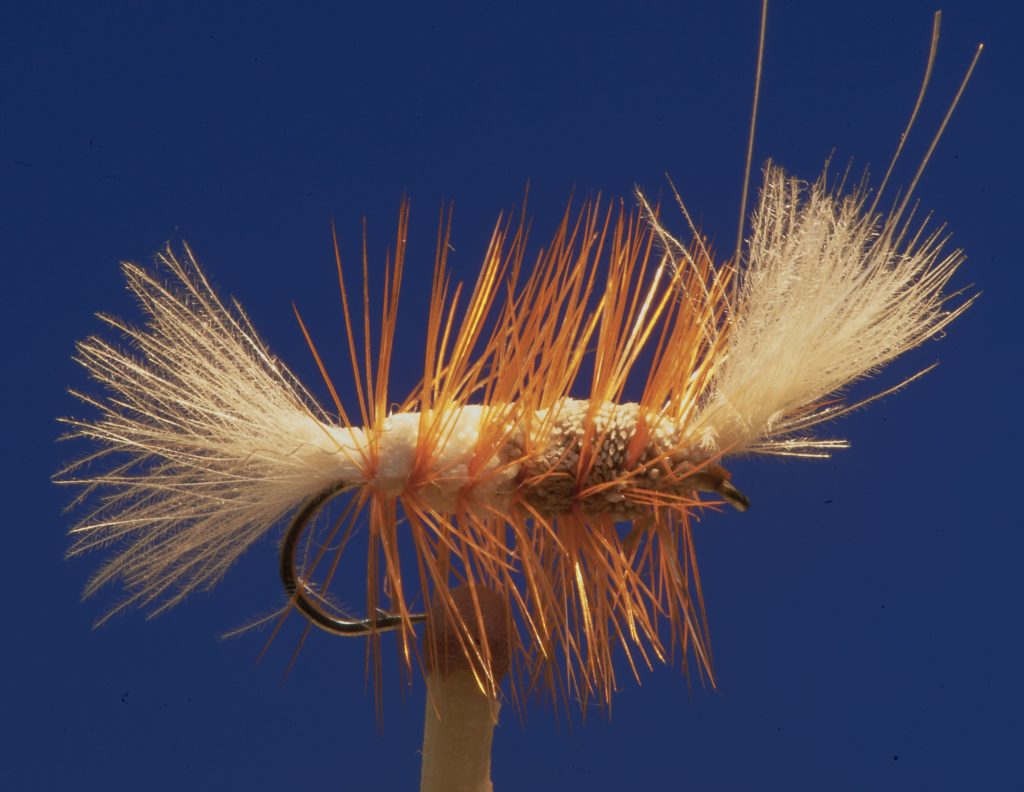 Right: a Micro Bomber with wings and tail of CDC – One of my favourite flies for finicky salmon in warm low summer water.
Right: a Micro Bomber with wings and tail of CDC – One of my favourite flies for finicky salmon in warm low summer water.Positioning the dry fly correctly – is a great part of the success of dry fly fishing
An integral aspect of salmon dry fly fishing is precise fly positioning. Just like with wet fly fishing, anglers depend on the salmon to rise and intercept the fly as it drifts by the spot where the salmon is holding. Rarely will a salmon move far from its lie to take the fly, emphasizing the importance of accurate placement. To delve deeper into this topic, we’ve collaborated with a skilled 3-D animator to create a film illustrating the dynamics of fly positioning. Additionally, our newsletter offers in-depth insights into fly positioning techniques and explores the concept of Snell’s Window.

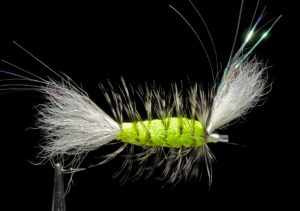
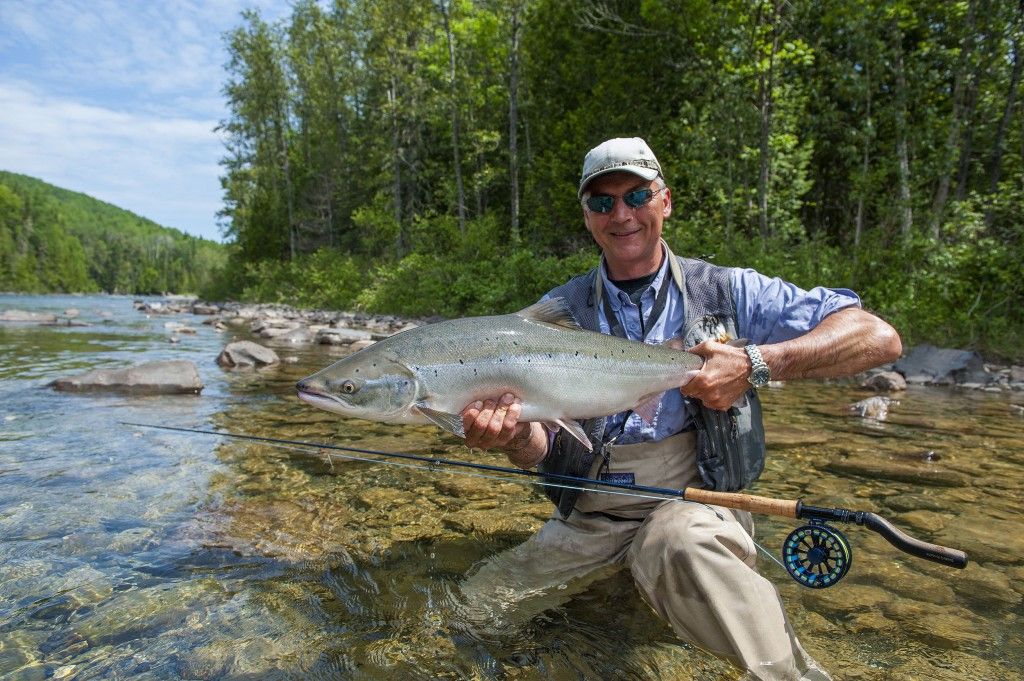
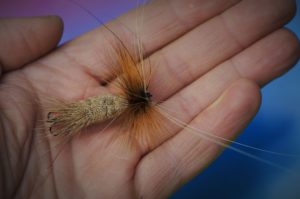
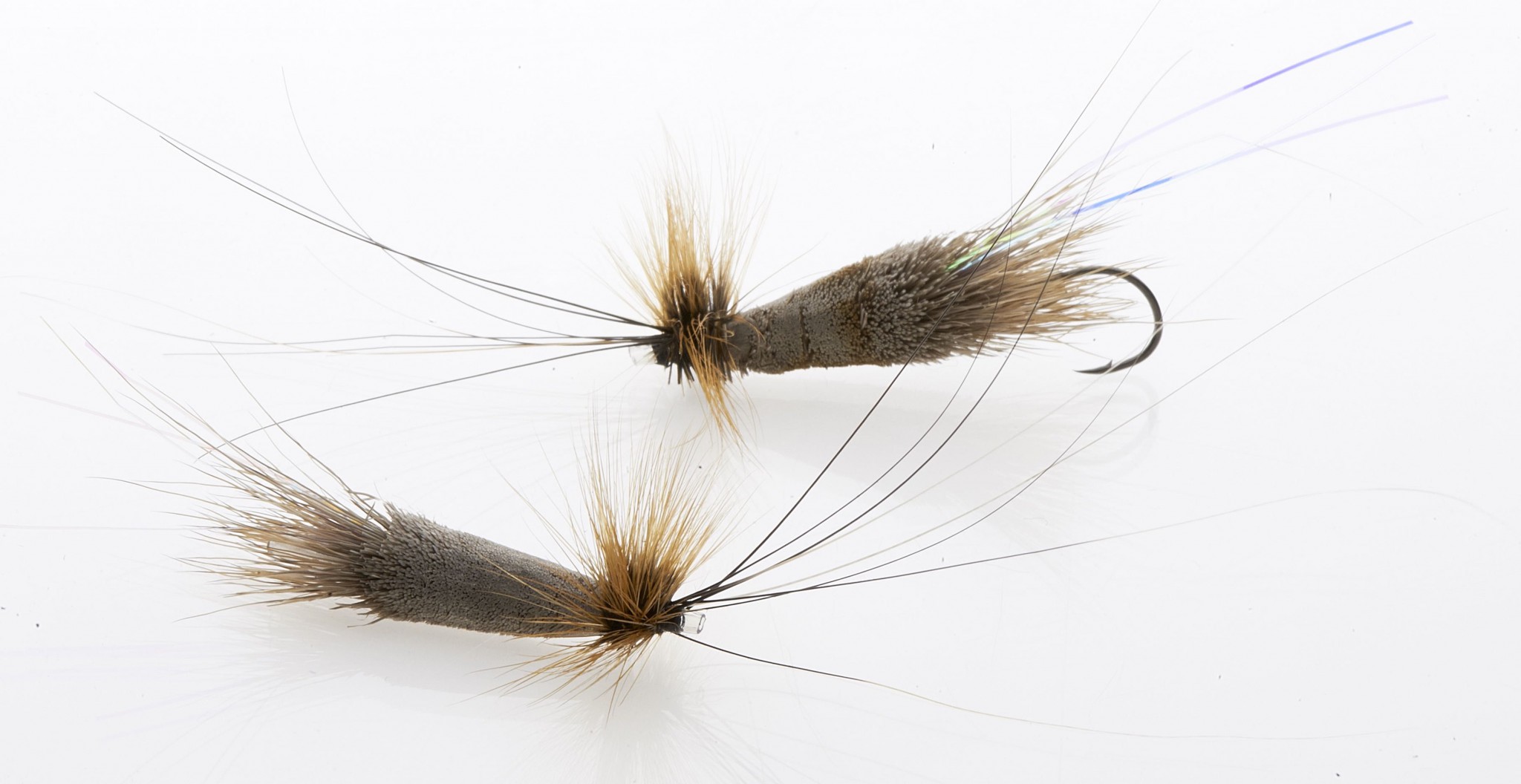

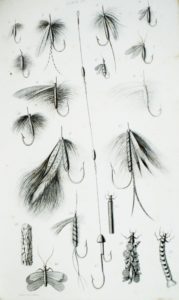 Salmon dry fly 1840’s
Salmon dry fly 1840’s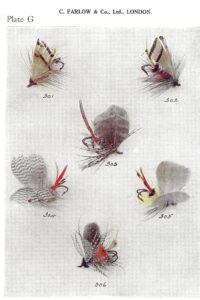 Major J.R Fraser’s salmon dry fly patterns 1909
Major J.R Fraser’s salmon dry fly patterns 1909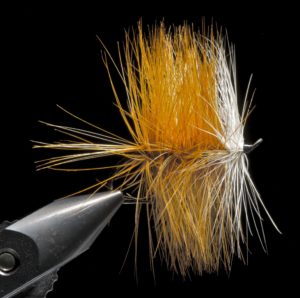
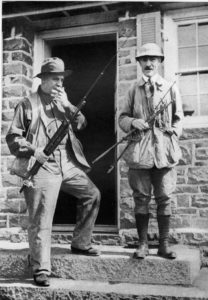 La Branche visits the Dee –
La Branche visits the Dee –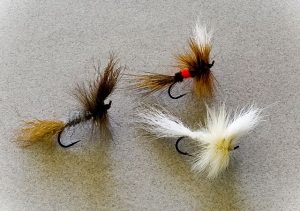 The Wulff flies 1950
The Wulff flies 1950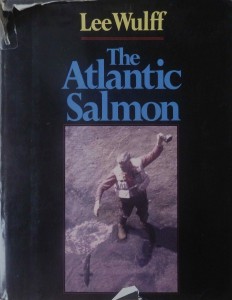
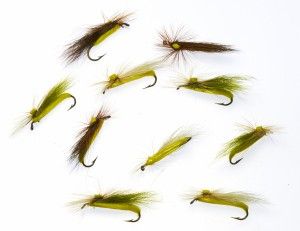
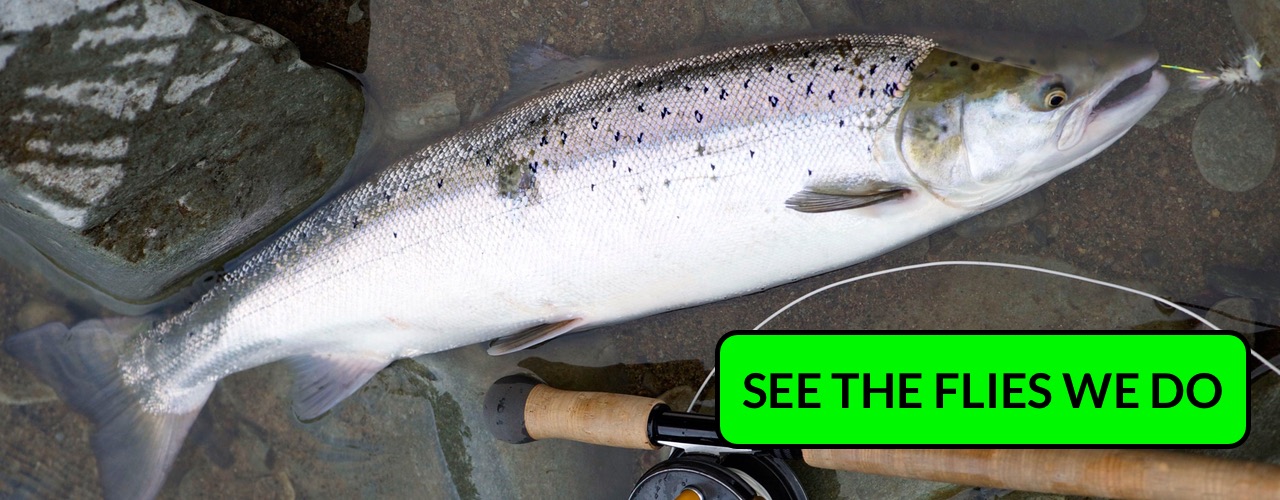
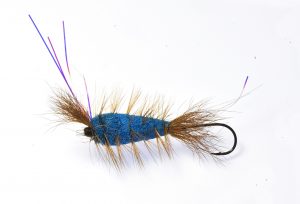 Read our page on
Read our page on 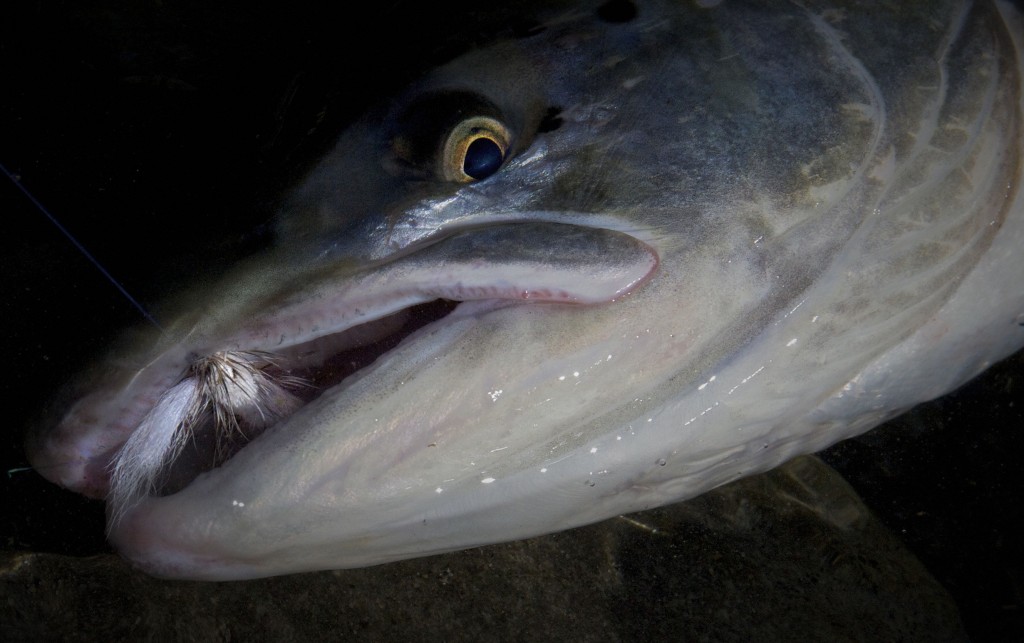
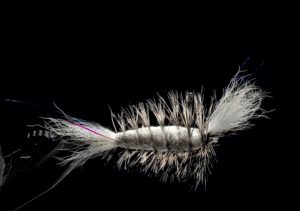
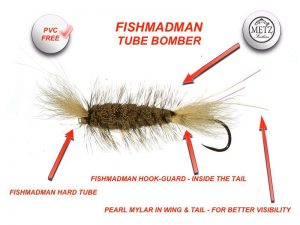
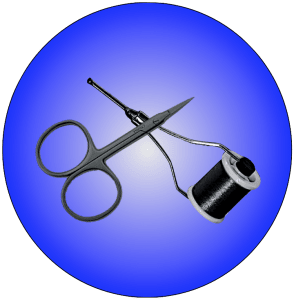 See how to tie
See how to tie